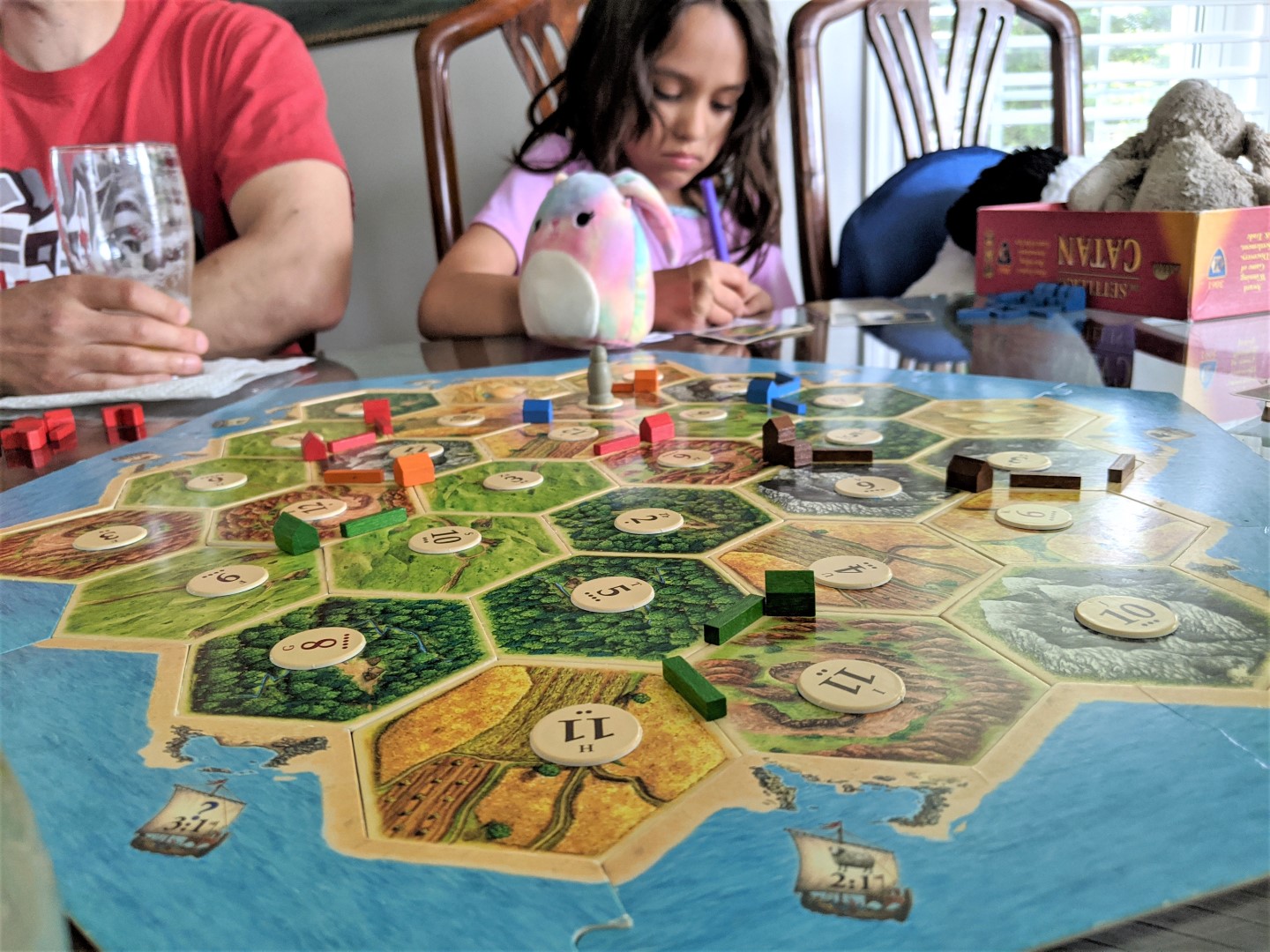Best games for families and children – In the realm of family entertainment, board games and video games hold a special place, offering countless opportunities for laughter, learning, and bonding. From engaging and educational games that foster cognitive development to cooperative games that promote teamwork and communication, the world of gaming has something for every family and child.
As we delve into the captivating world of games for families and children, we’ll explore the myriad benefits they offer, provide age-appropriate recommendations, and discuss the importance of balancing screen time with other activities. Join us on this playful journey as we discover the best games to ignite imaginations, spark creativity, and create lasting memories.
Engaging and Educational Games
Educational games provide children with opportunities to develop cognitive skills, problem-solving abilities, and creativity while having fun. They engage children in interactive and immersive experiences that enhance their learning and overall development.
These games often focus on specific educational concepts, such as language, math, and science. By incorporating these concepts into gameplay, children can learn and practice them in a playful and enjoyable manner.
Language Games
Language games help children develop their vocabulary, grammar, and communication skills. They can involve activities such as word puzzles, storytelling, and role-playing.
- Scrabble Junior: This classic word game introduces children to spelling, vocabulary, and strategy.
- Bananagrams: This fast-paced word-building game encourages quick thinking and spelling skills.
- Story Cubes: These dice feature images that can be used to create imaginative stories, fostering language development and creativity.
Math Games
Math games make learning math concepts fun and engaging. They can cover topics such as counting, addition, subtraction, multiplication, and geometry.
- Sushi Go Party!: This card game introduces children to number recognition, counting, and strategy.
- Sum Swamp: This board game teaches addition and subtraction through a colorful and interactive gameplay.
- Tangram: This classic puzzle game develops spatial reasoning and problem-solving skills.
Science Games
Science games introduce children to scientific concepts in a hands-on and engaging way. They can cover topics such as biology, chemistry, and physics.
- National Geographic Kids Science Fair Projects Book: This book provides step-by-step instructions for science experiments that explore various scientific principles.
- Thames & Kosmos Kids First Chemistry Kit: This kit introduces children to basic chemistry concepts through hands-on experiments.
- Snap Circuits Jr.: This building set allows children to create their own electrical circuits, fostering an understanding of electricity and engineering.
Cooperative and Collaborative Games

Cooperative games offer a unique and engaging experience for families and children, fostering teamwork, communication, and social skills. By working together towards a common goal, players learn to collaborate, problem-solve, and negotiate effectively.
Benefits of Cooperative Games
Cooperative games provide numerous benefits for children and families, including:
- Improved communication skills:Cooperative games encourage players to communicate clearly and effectively to achieve their goals.
- Enhanced teamwork:Players learn to work together as a team, valuing each other’s contributions and supporting one another.
- Increased problem-solving skills:Cooperative games often present challenges that require players to work together to find creative solutions.
- Strengthened social skills:Cooperative games promote positive social interactions, helping players develop empathy, cooperation, and respect for others.
Examples of Cooperative Games
There are numerous cooperative games available that are suitable for families and children of all ages. Some popular examples include:
- Pandemic:Players work together to prevent the spread of deadly diseases.
- Forbidden Island:Players collaborate to gather artifacts and escape a sinking island.
- Castle Panic:Players defend their castle against hordes of monsters.
- Flash Point: Fire Rescue:Players work as a team of firefighters to rescue victims and extinguish fires.
Age-Appropriate Games
Selecting age-appropriate games is crucial for children’s enjoyment and developmental benefits. Games should align with their cognitive, physical, and emotional capabilities.
Matching game complexity to developmental stages ensures that children are challenged appropriately, fostering their growth and preventing frustration or boredom.
Guidelines for Selecting Age-Appropriate Games
- Infants (0-12 months):Sensory and motor skills development; games with bright colors, simple sounds, and textures.
- Toddlers (1-3 years):Language and social development; games that encourage imitation, role-playing, and basic problem-solving.
- Preschoolers (3-5 years):Imagination, creativity, and fine motor skills development; games with stories, dress-up, and building blocks.
- School-age children (6-10 years):Cognitive development, social skills, and strategic thinking; games with rules, strategy, and cooperative play.
- Adolescents (11-18 years):Critical thinking, decision-making, and social interactions; games with complex storylines, cooperative challenges, and social deduction.
Inclusive and Accessible Games

Inclusive and accessible games are designed to provide enjoyable and engaging experiences for children with diverse abilities. These games often incorporate adaptive features, sensory elements, and multiple levels of difficulty to cater to different learning styles and physical needs.
Adaptive Features
Adaptive features allow children with disabilities to participate fully in the game. These features may include:
- Adjustable controls: Game controls can be customized to accommodate different physical abilities, such as larger buttons or alternative input devices.
- Closed captions: Text transcripts of dialogue and sound effects provide accessibility for deaf or hard-of-hearing children.
- Visual cues: Color-coding, symbols, and other visual aids can help children with cognitive impairments understand gameplay.
Sensory Elements
Sensory elements engage multiple senses to enhance the gaming experience. These elements may include:
- Tactile feedback: Vibrations, textures, and other tactile sensations provide feedback for children with visual impairments.
- Auditory cues: Sound effects, music, and voiceovers guide gameplay for children with visual impairments or cognitive difficulties.
- Visual stimuli: Bright colors, clear graphics, and simple designs can help children with attention deficit disorders focus and stay engaged.
Multiple Levels of Difficulty, Best games for families and children
Multiple levels of difficulty allow children of different abilities to enjoy the game. These levels may include:
- Beginner mode: Simplified gameplay and reduced challenges for younger children or those with disabilities.
- Intermediate mode: Moderate challenges and more complex gameplay for children with some experience or higher cognitive abilities.
- Advanced mode: Challenging gameplay and complex puzzles for older children or those with exceptional abilities.
Screen Time Considerations

It’s crucial to balance screen time with other activities for children’s overall well-being. Excessive screen use can impact their physical, mental, and social development. Setting limits and encouraging healthy screen habits is essential for parents.
Setting Limits
- Establish clear rules for screen time duration and frequency.
- Use parental control tools to monitor and restrict access to inappropriate content.
- Encourage children to engage in other activities like physical play, reading, or social interactions.
Final Thoughts
Whether you’re seeking games that nurture cognitive skills, promote collaboration, or simply provide a fun and engaging way to spend time together, the world of games for families and children is brimming with options. By embracing the power of play, we can create meaningful experiences that foster laughter, learning, and lifelong connections.
Detailed FAQs: Best Games For Families And Children
What are the benefits of playing games as a family?
Family game nights offer numerous benefits, including improved communication, enhanced problem-solving skills, and the creation of lasting memories.
How can I choose age-appropriate games for my children?
Consider your child’s developmental stage, interests, and abilities when selecting games. Age ratings and recommendations can also provide guidance.
What are some tips for managing screen time for children?
Establish clear limits, encourage alternative activities, and engage in screen time together to promote healthy habits.
